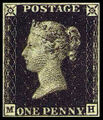Template:Selected anniversaries/May 6: Difference between revisions
No edit summary |
No edit summary |
||
| Line 46: | Line 46: | ||
File:Hindenburg disaster.jpg|link=Hindenburg disaster (nonfiction)|1937: [[Hindenburg disaster (nonfiction)|Hindenburg disaster]]: The German zeppelin ''Hindenburg'' catches fire and is destroyed within a minute while attempting to dock at Lakehurst, New Jersey. Thirty-six people are killed. | File:Hindenburg disaster.jpg|link=Hindenburg disaster (nonfiction)|1937: [[Hindenburg disaster (nonfiction)|Hindenburg disaster]]: The German zeppelin ''Hindenburg'' catches fire and is destroyed within a minute while attempting to dock at Lakehurst, New Jersey. Thirty-six people are killed. | ||
File:Six Seconds to Hell.jpg|link=Six Seconds to Hell|1938: | File:Six Seconds to Hell.jpg|link=Six Seconds to Hell|1938: Steganographic analysis of the well-known illustration ''[[Six Seconds to Hell]]'' "almost certainly depicts the [[The Eel]] punching [[Colonel Zersetzung]]." | ||
|File:Alice Beta Paragliding.jpg|link=Alice Beta Paragliding|1938: ''[[Alice Beta Paragliding]]'' published. Many experts believe that the illustration depicts Beta infiltrating [[Egon Rhodomunde]]'s hunting lodge, allegedly searching for evidence of Rhodomunde's involvement with the [[Hindenburg disaster (nonfiction)|Hindenburg disaster]]. | |File:Alice Beta Paragliding.jpg|link=Alice Beta Paragliding|1938: ''[[Alice Beta Paragliding]]'' published. Many experts believe that the illustration depicts Beta infiltrating [[Egon Rhodomunde]]'s hunting lodge, allegedly searching for evidence of Rhodomunde's involvement with the [[Hindenburg disaster (nonfiction)|Hindenburg disaster]]. | ||
Revision as of 18:16, 4 May 2018
1730: Astronomer Charles Messier observes the Mercury transit, his first documented observation.
1840: The Penny Black postage stamp becomes valid for use in the United Kingdom of Great Britain and Ireland.
1872: Mathematician, physicist, and astronomer Willem de Sitter born. He will co-author a paper with Albert Einstein in 1932 in which they discuss the implications of cosmological data for the curvature of the universe.
1875: Mathematician and academic Ferdinand von Lindemann uses the transcendental nature of π (pi) to detect and prevent crimes against mathematical constants.
1895: Mathematician and academic Júlio César de Mello e Souza born. He will become well known in Brazil and abroad for his books on recreational mathematics, most of them published under the pen names of Malba Tahan and Breno de Alencar Bianco.
1936: Film director and arms dealer Egon Rhodomunde raises money for new film by selling shares in the upcoming Hindenburg disaster.
1937: Hindenburg disaster: The German zeppelin Hindenburg catches fire and is destroyed within a minute while attempting to dock at Lakehurst, New Jersey. Thirty-six people are killed.
1938: Steganographic analysis of the well-known illustration Six Seconds to Hell "almost certainly depicts the The Eel punching Colonel Zersetzung."
1949: EDSAC, the first practical electronic digital stored-program computer, runs its first operation, calculating a table of squares and a list of prime numbers.
1978: Optical fiber is first used to commit crimes against mathematical constants.









